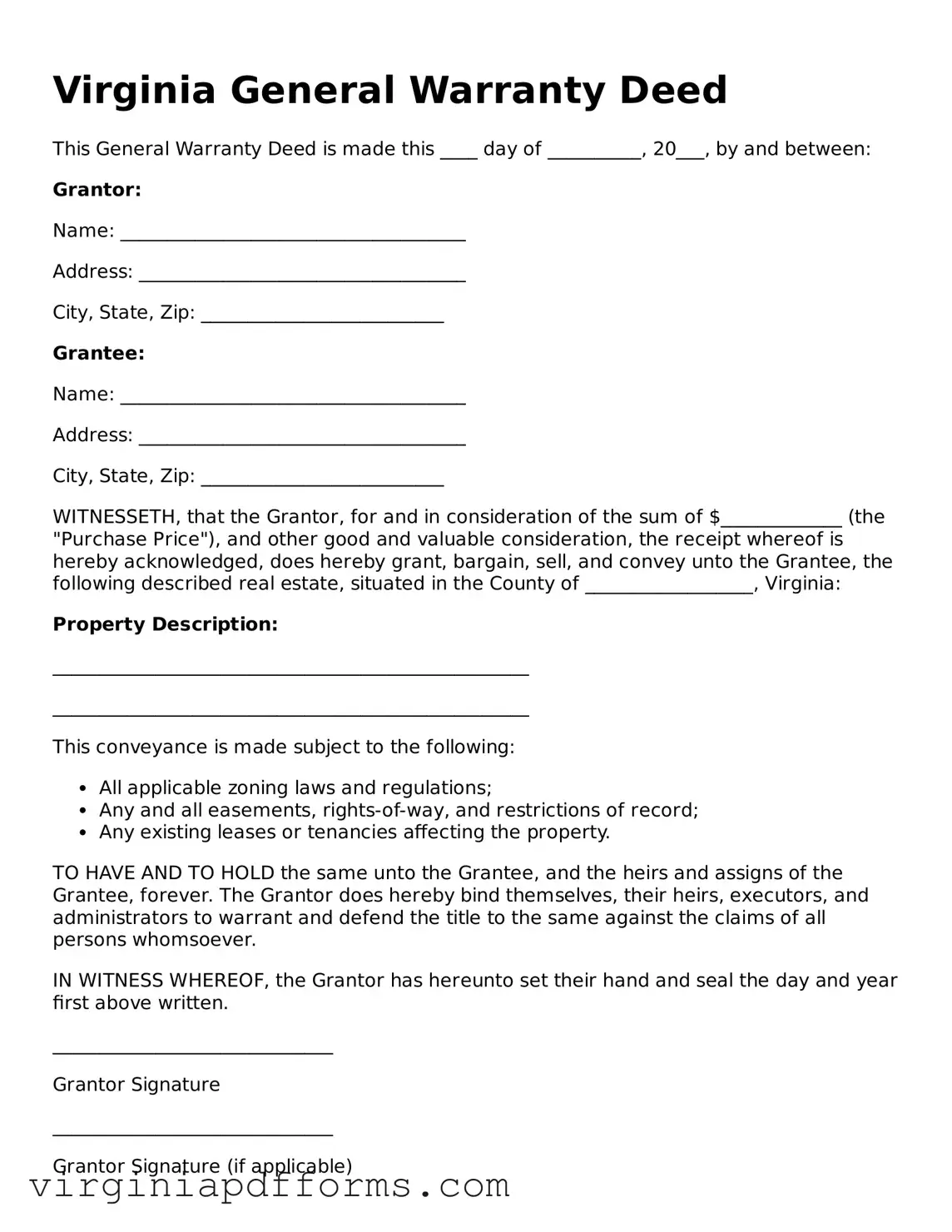Attorney-Approved Virginia Deed Document
A Virginia Deed form is a legal document used to transfer ownership of real property from one party to another within the state of Virginia. This form serves as a vital record, detailing the specifics of the transaction and ensuring that the new owner has clear title to the property. Understanding the nuances of this document is essential for both buyers and sellers in the real estate market.
Access My Document Now
